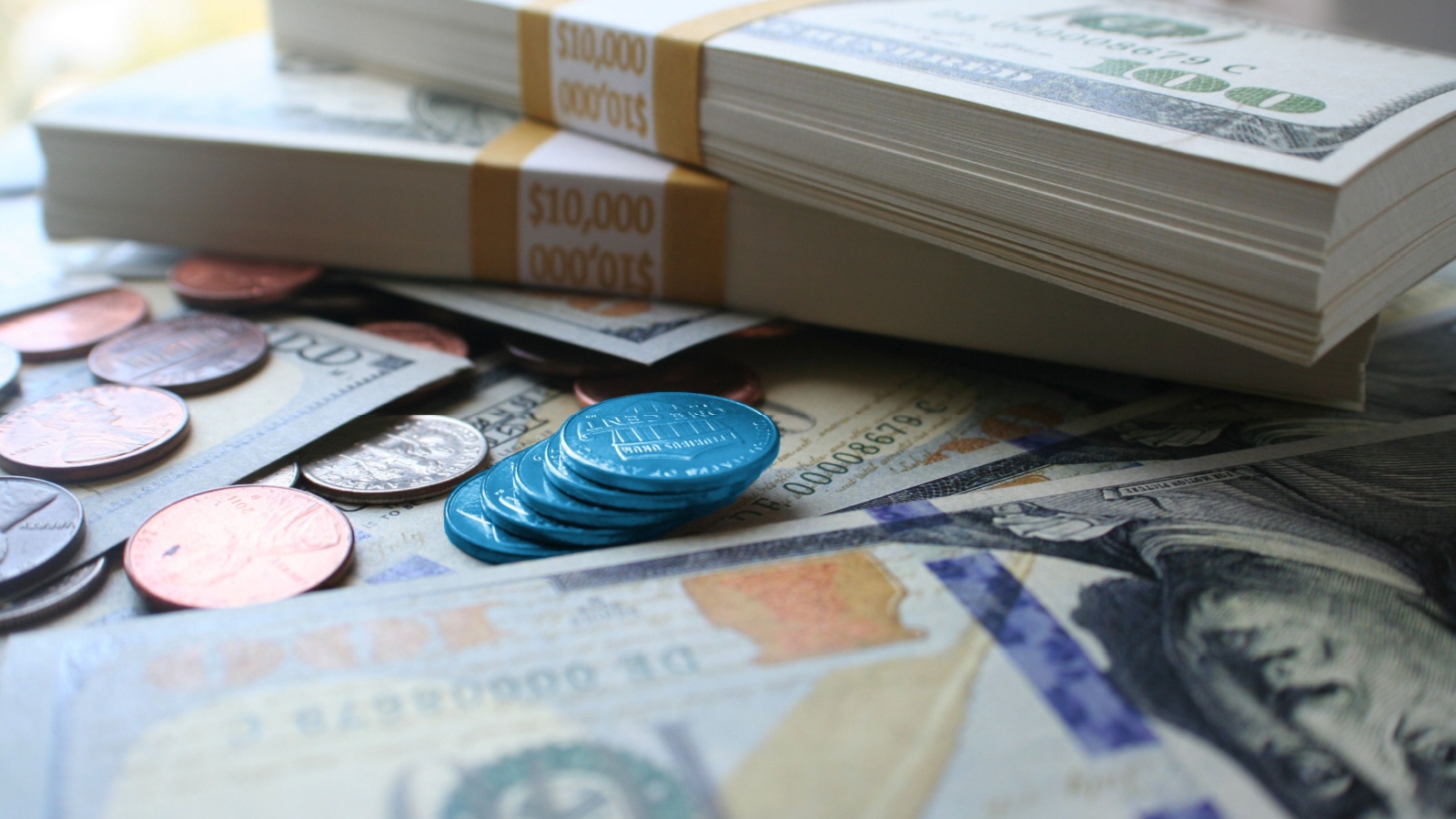The Tax-Free Savings Account (TFSA) is one of the most powerful financial tools available to Canadians. Yet, many people still misuse it or fail to take full advantage of its potential. From underestimating the long-term benefits of tax-free compounding to making costly contribution errors, these mistakes can seriously limit your wealth-building opportunities. Here are 20 TFSA investing mistakes too many Canadians still make:
Treating the TFSA Like a Simple Savings Account

Too many Canadians still use their TFSA only as a cash savings account, missing out on tax-free investment growth. While it’s fine to park short-term emergency funds in a high-interest TFSA, leaving the bulk of your contribution room in cash ignores the real power of compounding returns. Stocks, ETFs, and bonds held in a TFSA can grow tax-free for decades, making it one of the most effective wealth-building tools in the country, and treating it as just a savings account leaves significant long-term gains on the table.
Overcontributing and Paying Penalties

One of the costliest TFSA mistakes is overcontributing, which results in steep monthly penalty taxes from the CRA. Many investors forget to track withdrawals and new contributions, leading to accidental overfunding. Since unused room carries forward every year, it’s better to stay under the limit than risk a penalty. Checking your exact contribution room through the CRA’s My Account is the safest way to avoid errors. Overcontributing just once can erase a year’s worth of investment gains, making careful recordkeeping essential for TFSA success.
Withdrawing and Recontributing Too Early

Many Canadians mistakenly believe they can recontribute TFSA withdrawals immediately. In reality, any amount you withdraw can only be recontributed the following calendar year unless you still have unused room. Adding it back too soon counts as an overcontribution, leading to penalties. For example, if you withdraw $10,000 in June and recontribute it in September without available room, you’ll face fines. The smarter move is to plan withdrawals carefully and wait until the following year to replace the funds, avoiding unnecessary tax headaches.
Holding U.S. Dividend Stocks Without Planning for Taxes

While capital gains and Canadian dividends inside a TFSA are tax-free, U.S. dividend stocks are subject to a 15% withholding tax that can’t be recovered in this account. Many Canadians are surprised to see a chunk of their returns disappear, but if you want exposure to U.S. stocks, ETFs focused on growth, rather than dividends, are more TFSA-efficient. Alternatively, holding dividend-paying U.S. stocks in an RRSP avoids this withholding tax. Understanding cross-border tax rules is crucial to maximizing your TFSA’s long-term performance.
Not Investing at All

One of the biggest mistakes is leaving your TFSA empty or barely funded. The cumulative contribution room has grown to tens of thousands of dollars, and each year you don’t use it is a lost opportunity for tax-free growth. Even modest contributions to an ETF or dividend stock portfolio can snowball into six figures over time. Too often, Canadians delay because they don’t know where to start, but the best fix is to start small, stay consistent, and let time and compounding do the heavy lifting.
Chasing High-Risk Investments for Quick Gains

Some Canadians view the TFSA as a high-risk investment vehicle, such as penny stocks or speculative crypto plays, due to the tax-free nature of the gains. But this strategy often backfires, wiping out contribution room that can’t be replenished. Once you lose money inside a TFSA, there’s no way to earn back the lost tax-sheltered potential. A smarter move is to balance growth investments with long-term stability, through ETFs, blue-chip stocks, or bonds, so your TFSA works as a steady wealth-building tool rather than a gambling account.
Forgetting That TFSA Room Is Individual

Couples often assume they can share TFSA contribution space, but in reality, each Canadian has their limit. Overcontributing to a spouse’s TFSA by mistake can lead to double penalties. The best approach is to maximize both accounts strategically, doubling your household’s tax-free growth potential. Spouses can gift each other funds to contribute to their TFSAs without triggering attribution rules. Managing accounts together while respecting individual limits ensures you’re both using the program effectively and avoiding unnecessary CRA penalties.
Ignoring the Power of Compounding

The real strength of a TFSA lies in its ability to avoid taxes and benefit from decades of compounding returns that grow untouched. Too many Canadians dip into their accounts early, undermining long-term growth. For instance, $6,500 invested yearly at 7% could grow to nearly half a million dollars over 30 years, all tax-free. Withdrawing frequently interrupts this snowball effect, but treating your TFSA like a long-term investment vehicle rather than a short-term spending fund allows compounding to work its magic.
Holding GICs at Low Rates

Many Canadians keep Guaranteed Investment Certificates (GICs) in their TFSAs, thinking they’re maximizing safety. But locking in low returns wastes valuable contribution space, and since TFSA growth is tax-free, higher-yield investments benefit far more from the shelter. While GICs have their place for short-term savings, they shouldn’t dominate your TFSA strategy. A diversified portfolio of ETFs, equities, or even higher-yield bonds generally outpaces GICs over the long run. Using your TFSA for assets with stronger growth potential is a smarter use of limited contribution room.
Not Naming a Beneficiary

Overlooking beneficiary designations is a small mistake that can have big consequences. Without a named beneficiary, or better, a successor holder, your TFSA could be tied up in probate or face unnecessary taxes when you pass away. Naming a spouse as a successor holder allows them to take over the TFSA directly, preserving all tax benefits. For other heirs, naming a beneficiary ensures smoother, faster transfers, making it a simple step most Canadians forget. Still, it can protect your family’s inheritance and keep your tax-free legacy intact.
Using the TFSA Only for Short-Term Goals

While a TFSA is flexible, using it solely for short-term purchases, like vacations or new cars, limits its long-term wealth-building potential. Yes, withdrawals are easy, but if you constantly drain the account, you lose decades of tax-free growth. The best strategy is to balance and keep an emergency fund or short-term savings in part of your TFSA. Dedicate the rest to investments you won’t touch for 10, 20, or even 30 years, which is where the true power of tax-free compounding really shines.
Forgetting to Track Investment Fees

High-fee mutual funds and actively managed products can quietly eat away at TFSA returns. Since growth is tax-free, every percentage point lost to fees represents future wealth you’ll never see. Many Canadians still hold bank-sold mutual funds charging 2% or more annually, and over decades, that cost can reduce returns by tens of thousands. Low-cost index ETFs or online brokerage platforms offer much better long-term efficiency. Paying attention to management expense ratios (MERs) inside your TFSA is one of the easiest ways to keep more of your money.
Believing TFSAs Are Just for the Wealthy

A common misconception is that TFSAs only benefit people with lots of money to invest. In reality, even small monthly contributions can grow into significant tax-free wealth over time. Someone contributing $100 a month into a TFSA invested in index funds could build a six-figure portfolio over decades, and the earlier you start, the bigger the payoff. The TFSA is one of the most accessible tools for middle-class Canadians to get ahead financially, and ignoring it because of income level is a huge mistake.
Not Reinvesting Dividends

Some investors let dividends inside their TFSA sit in cash, forgetting to reinvest them. While the income is tax-free, it loses momentum if left idle. Automatic dividend reinvestment plans (DRIPs) allow you to purchase more shares with each payout, accelerating compounding, and over time, reinvested dividends can make up a substantial portion of total returns. For example, Canadian banks or utility stocks often yield 4-6%, and reinvesting those dividends tax-free supercharges growth.
Using TFSA Room for Speculative Day Trading

The CRA has cracked down on Canadians who treat their TFSA like a day trading account. If your account activity resembles a business, profits may be subject to taxation, and beyond legal risk, constant trading incurs fees and often yields poor results. The TFSA is best suited for steady, tax-free growth, not speculative churn, and using it for long-term, buy-and-hold investing is far safer and more effective. Attempting to game the system with day trading not only undermines your wealth but can also attract unwanted tax audits.
Forgetting About Inflation

Many Canadians leave their TFSA in low-interest cash, believing the principal is safe, but inflation quietly eats away at that money’s value year after year. A dollar saved today will buy much less in 20 years if it’s not invested, and since TFSA earnings are shielded from tax, they are the perfect place to beat inflation with equities, ETFs, or higher-yield investments. Ignoring inflation risk is just as dangerous as market volatility, and it leaves your future purchasing power significantly weaker than it could be.
Not Diversifying Enough

Some Canadians overload their TFSA with one sector, like tech stocks or cannabis, hoping for outsized gains. While concentration can pay off short-term, it’s risky in a long-term tax shelter, because if that sector crashes, you’ve permanently lost contribution room. Diversification across industries, geographies, and asset classes smooths returns and protects wealth, and balanced ETFs are an easy way to achieve this. A diversified TFSA ensures you’re not reliant on one market swing, preserving your tax-free growth potential and providing stability across economic cycles.
Forgetting to Use Contribution Room Later in Life

Some Canadians mistakenly think TFSAs only benefit younger investors. But even in retirement, the TFSA is an excellent tool for tax-free income and estate planning. Contribution room continues to grow annually, regardless of age, and withdrawals never affect benefits like Old Age Security. Retirees can hold dividend stocks or ETFs to generate tax-free cash flow, reducing the need for taxable withdrawals from RRSPs. Overlooking TFSA contributions later in life means missing out on one of the few accounts that stay flexible, tax-free, and valuable indefinitely.
Not Reviewing Portfolio Performance Regularly

Another mistake is setting up a TFSA and never revisiting it. Markets, goals, and personal circumstances change, but many Canadians fail to rebalance or adjust their TFSA investments. Over time, a portfolio can become overweight in one sector, or risk levels can shift as retirement nears. A simple yearly review ensures your TFSA stays aligned with your financial objectives. Ignoring performance can mean lost opportunities or excess risk, turning what should be a powerful wealth tool into a stagnant account.
Missing Out on Dollar-Cost Averaging

Some Canadians wait for the perfect time to invest, leaving TFSA contribution room unused. The truth is, market timing rarely works, and dollar-cost averaging, which is contributing steadily throughout the year, smooths out volatility and ensures money is always working for you. This approach removes the guesswork and reduces the emotional stress of investing. Over decades, consistent contributions will almost consistently outperform sporadic lump-sum investing. Canadians who hesitate on the sidelines risk missing out on compounding gains, making dollar-cost averaging one of the smartest TFSA habits to adopt.
21 Products Canadians Should Stockpile Before Tariffs Hit

If trade tensions escalate between Canada and the U.S., everyday essentials can suddenly disappear or skyrocket in price. Products like pantry basics and tech must-haves that depend on are deeply tied to cross-border supply chains and are likely to face various kinds of disruptions
21 Products Canadians Should Stockpile Before Tariffs Hit
